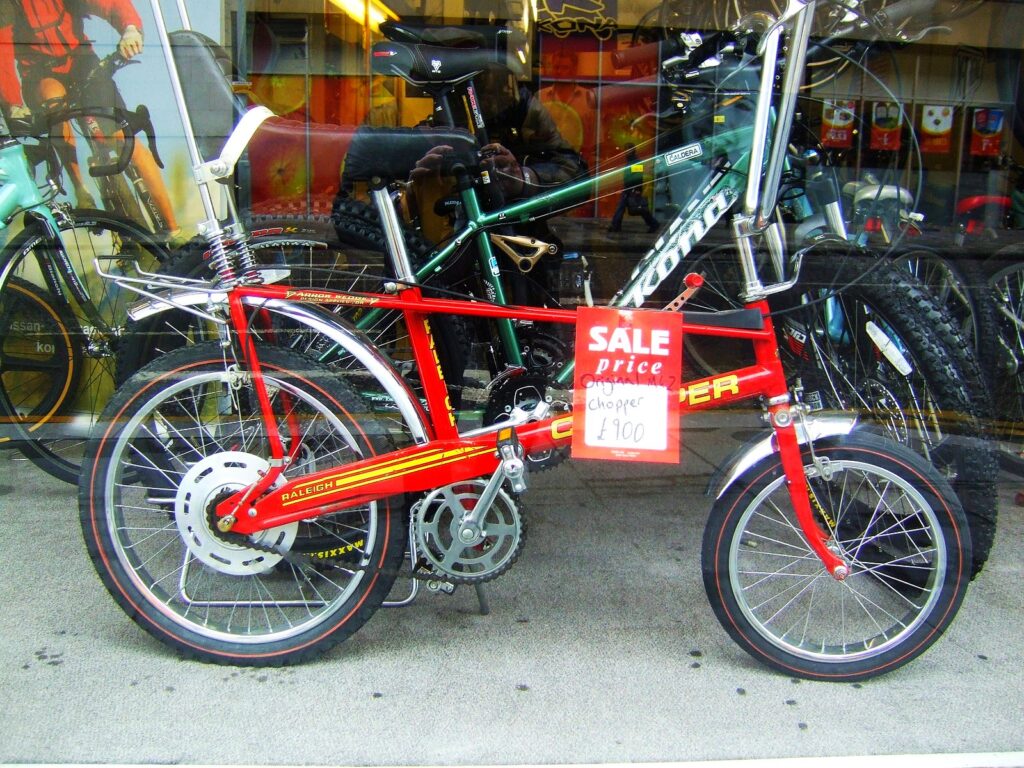Selling a bike can be as thrilling as the first ride, but it requires more than just a “For Sale” sign. It’s about presenting your bike in the best light and finding the right buyer who appreciates its value. So, how to sell a bike?
A well-maintained bike, paired with a smart selling strategy, can make the difference between a quick sale and a lengthy process. In this article, we’ll navigate through the essentials of how to sell a bike, ensuring you’re equipped with the knowledge to close the deal effectively.
Remember, the key to success lies in preparation, from polishing your bicycle to perfection to setting a competitive price that reflects its true worth.
Assessing Your Bike
Before placing your bicycle on the market, a thorough assessment is crucial. It’s the cornerstone of a successful sale, providing potential buyers with transparent insight into what they’re investing in.
Scrutinize your bicycle’s age, as it can influence buyer interest—vintage models may attract collectors, while newer ones appeal for their modern features. Examine its condition meticulously; a well-kept bike commands a higher price.
Brand reputation also plays a pivotal role; trusted names often fetch more due to perceived reliability. Lastly, gauge market demand; understanding what buyers seek can guide you to price your bicycle competitively.
A precise evaluation not only positions your bicycle favorably but also instills confidence in buyers, paving the way for a smooth transaction.
What’s My Bike Worth?
Determining the worth of your bicycle hinges on strategic research and savvy pricing. Start by scoping out the current market; look for bikes that match yours in model, condition, and age. This local snapshot gives you a baseline, ensuring your price isn’t sky-high or a giveaway.
Consider the original purchase price but adjust for wear and tear, upgrades, or unique features that might add value. Reflect on the bike’s performance and any maintenance records that affirm its condition.
A transparent, evidence-backed price resonates with buyers, signaling a fair deal. Ultimately, setting a competitive price that aligns with local trends and the bike’s merits will attract serious buyers and could expedite the sale.
Remember, a realistic valuation is the magnet that draws in the right audience for your bicycle.
How to Sell a Bike?
Preparing Your Bike for Sale
Preparing your bicycle is the first stage, (how to sell a bike safely), the aim is to make it as appealing as possible to potential buyers. Begin with a thorough cleaning, addressing every nook and cranny to give it a gleaming finish.
Next, conduct a detailed maintenance check: tighten bolts, lubricate moving parts, and ensure the gears shift smoothly. If there are any minor repairs needed, address them now; a bicycle in top condition is more likely to sell.
Don’t forget to inflate the tires and perhaps even upgrade certain components if it will significantly increase the bike’s value. Presentation is key; a clean, well-maintained bike not only looks better but also suggests to buyers that it has been cared for properly, which can be just as important as the bicycle itself. With these steps, your bicycle will stand out in the marketplace.
Creating an Attractive Listing
Crafting an attractive listing for your bicycle is about blending honesty with allure. Start with crisp, clear photos from various angles to showcase the bike’s condition and features. Accompany these with a detailed description that narrates the bike’s story—its adventures, maintenance history, and any upgrades.
Be meticulous with the specifications; accuracy here builds trust. When writing your ad copy, be persuasive yet informative; highlight what makes your bicycle a standout choice, like its lightweight frame or reliable performance.
Use language that resonates with your target audience, focusing on benefits that meet their cycling needs. A well-crafted listing is your first interaction with potential buyers, so make it count. It’s not just about selling a bike; it’s about passing on the joy of cycling to its next enthusiast.
Where is the Best Place to Sell My Bike?
When it’s time to part ways with your trusty bicycle, choosing the right platform to sell it can be as crucial as setting the right price. Here’s a comparison of four popular online marketplaces to help you decide where to list your bicycle for sale.
How to Sell a Bike on Facebook Marketplace?
Selling on Facebook Marketplace is straightforward. Simply list your item, set your price, and wait for local buyers to contact you. It’s a community-driven space where you can quickly connect with interested parties in your area.
The platform is user-friendly, and since many people browse Facebook daily, your listing is likely to get plenty of views. Remember to include clear photos and a detailed description to stand out.
How to Sell a Bike on Craigslist?
Craigslist is the old faithful of online classifieds. It’s best for sellers who prefer a no-frills, direct approach to local transactions. Listing your bicycle here means you’re likely to attract serious buyers who are ready to negotiate and make a quick purchase. Ensure your ad is detailed and honest about the bike’s condition to attract genuine interest.
How to Sell a Bike on Ebay?
eBay offers a more structured selling experience with a broader reach, potentially attracting buyers from across the country. It’s ideal if you’re looking to auction your bicycle or set a fixed price.
Detailed listings with high-quality photos and descriptions can help you fetch a competitive price, but remember to factor in shipping costs and eBay fees.
How to Sell a Bike on the Pro’s Closet?
For those seeking a hassle-free selling process, The Pro’s Closet specializes in used bicycles. They offer competitive quotes, handle the shipping, and even clean up your bicycle before sale.
This platform is perfect for sellers who value convenience and are willing to trade a bit of profit for a professional, streamlined service.
Choosing the Right Platform Selecting the right platform depends on your preferences. If you want a quick, local sale, Facebook Marketplace or Craigslist are your go-to options. For a wider audience and a potentially higher price, eBay is suitable. And if ease and convenience are your priorities, The Pro’s Closet is unmatched.
Consider your target audience and how much effort you’re willing to put into the selling process before making your choice. For sure this would have answers your question: “where is the best place to sell my bicycle.”
Negotiation and Closing the Deal
When selling your bicycle, the art of negotiation is key to a successful transaction. Respond to inquiries swiftly and with professionalism, showcasing your bike’s value and your commitment to a smooth sale.
Be open to dialogue about the price, but know your minimum acceptable amount in advance. Highlight the bike’s features and upkeep, which justify your asking price. If a buyer proposes a lower figure, counteroffer with a slightly higher amount, finding a middle ground that satisfies both parties.
Once you agree on a price, confirm the payment method and finalize the deal promptly. Clear communication and a fair negotiation will lead to a satisfactory closure for you and the buyer, ensuring a positive experience and a swift sale.
Completing the Sale
Completing the sale of your bicycle involves a few critical steps to ensure everything is above board and legally sound. Begin by agreeing on a payment method that is secure for both parties, such as cash, bank transfer, or a verified digital payment platform.
Once payment is confirmed, provide the buyer with a bill of sale and any other necessary documentation, which should include details like the bike’s make, model, and serial number, as well as the terms of the sale.
It’s essential to transfer ownership officially, which may involve signing over a title if applicable. Always adhere to local regulations regarding private sales to avoid future complications. Proper documentation not only protects both parties but also validates the transaction as legitimate.
Safety Measures
When arranging to meet potential buyers for your bicycle, prioritize safety by choosing a well-lit, public location. This ensures visibility and security for both parties during the transaction. If a test ride is requested, accompany the buyer while maintaining a safe distance to prevent theft.
It’s also wise to limit the personal information you share; provide only what’s necessary to complete the sale. A cautious approach to personal data and meeting arrangements can safeguard you against potential risks, making the selling process secure and trustworthy for everyone involved.
Conclusion
Selling a bicycle involves clear strategy and effective presentation. Highlighting the bike’s features, setting a competitive price, and advertising in the right marketplaces are crucial steps. Quality photos and a detailed description will attract potential buyers.
Safety during viewings and transactions is paramount. By applying these tactics, sellers can ensure a swift and profitable sale. Remember, patience and communication are key to finding the right buyer for your bike.
Hope you have learned how to sell a bike, now it’s your turn to put these strategies into action and achieve a successful sale.
FAQs
Place bicycle in well-lit area, clean it, capture multiple angles, highlight features, and use high-resolution images for online listings.
Yes, selling used bikes can be profitable if they’re well-maintained and marketed effectively to the right audience.
The safest way to sell a bicycle is through reputable online platforms or local bike shops, ensuring secure payment methods.
Bikes generally hold good resale value, especially if they’re well-kept, branded, and in demand within the cycling community.



